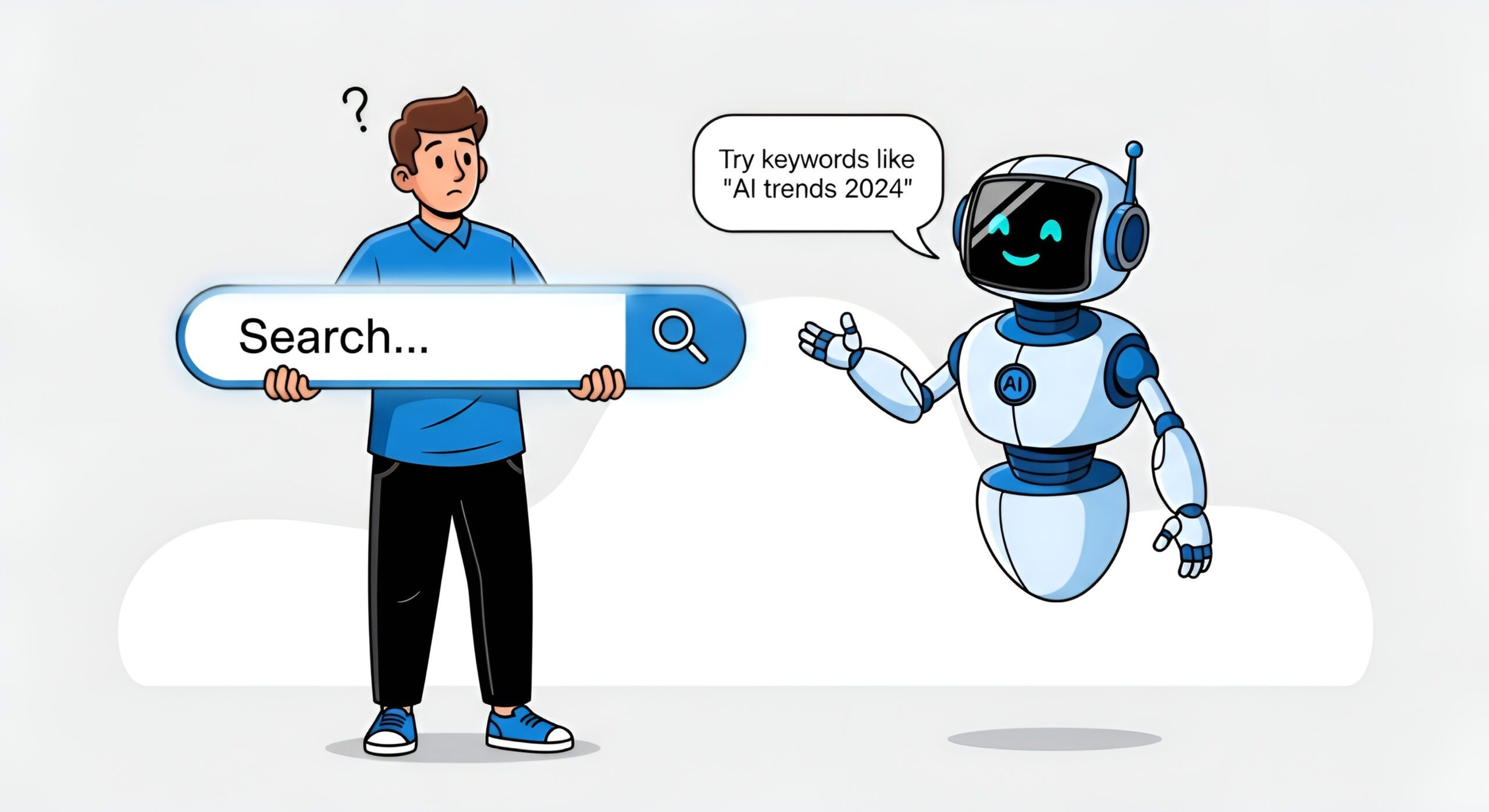What Brands Miss When They Don’t Monitor Suggested Searches

When someone starts typing your brand name or product into the Google search bar, the search engine immediately begins to display suggested searches. These autocomplete suggestions, also known as keyword query suggestions or predictive search suggestions, are not random; they are carefully generated using frequent search data, recent searches, and trending search terms. Powered by sophisticated machine learning algorithms applying structured parameters and hierarchical lists, the search feature predicts the next word or phrase to help refine queries and deliver relevant results in real time.
For brands, monitoring these search suggestions is crucial because they provide direct insight into customer intent and perception that rarely appears in surveys, feedback forms, or social sentiment dashboards. Suggested searches reveal what people think before they click, making them among the most honest and immediate indicators of brand perception.
What Suggested Searches Actually Are
Suggested searches, also known as autocomplete or keyword query suggestions, are predictive search features that appear dynamically as a user types in the search bar or address bar. They are based on a combination of:
- Popular searches and trending searches
- Past searches and previous searches
- Location-specific interest and language variations for a particular location
- Machine learning algorithms apply structured parameters and hierarchical lists to predict the next word or phrase
The search engine’s goal is to save time and reduce user effort by helping users reach the most relevant search results quickly. For brands, these suggestions serve as a continuously updated window into what people want to know about them.
Why Suggested Searches Matter More Than Most Brands Realize
Suggested searches often reveal customer concerns and motivations that they don’t express openly:
- Confusion (e.g., “how does it work?”)
- Hesitation (e.g., “is it worth it?”)
- Comparison (e.g., “which one is better?”)
- Concern (e.g., “is this legit?”)
- Curiosity (e.g., “does it solve my problem?”)
These signals influence key business outcomes, including:
- Search ranking and visibility on Google search
- Brand reputation and trustworthiness
- Click-through rates from search results
- Conversion rates on websites and mobile devices, including Android phones
Ignoring these suggested queries means missing the questions customers already have, which can negatively impact your SEO and customer engagement.
What Brands Miss When They Don’t Monitor Suggested Searches
1. Real Customer Intent — Not Just Keywords
While traditional keyword research shows what people search for, suggested searches reveal why they search for it. For example, typing “office chair” may show autocomplete suggestions like:
- office chair back support
- office chair for home
- office chair no wheels
- office chair vs gaming chair
Each suggested query expresses a specific need or motivation. Without monitoring these, your product pages, messaging, and content risk answering the wrong questions, missing out on addressing real user intent.
2. Early Signs of Reputation Risk
Negative or concerning autocomplete suggestions often appear before negative reviews, social complaints, or PR issues become visible. Examples include:
- brand name + scam
- brand name + doesn’t work
- brand name + refund policy
- brand name + complaints
- brand name + lawsuit
These early warnings allow brands to proactively address issues before they escalate and become public, indexed problems that are harder to reverse.
3. Competitors Capturing Your Demand
Autocomplete suggestions frequently include built-in comparisons such as:
- brand name vs competitor
- alternative to brand name
- cheaper than brand name
When brands don’t monitor these, they miss which competitors are gaining attention, what customers value about them, and where messaging gaps create confusion. Competitors use these moments to position themselves as smarter, cheaper, or more trusted alternatives.
4. Lost SEO Growth That Requires No Guessing
Suggested searches represent keyword research already done for you, based on real user behavior and frequent search data. Brands that ignore them miss out on:
- Content topics that drive qualified traffic
- Phrases customers actually use, not internal jargon
- Search terms with high buying intent
This is not a “nice-to-have” SEO tactic but the lowest-effort path to visibility because the queries are already proven. If your content doesn’t answer what people are actively searching, it simply won’t rank well, regardless of quality.
How to Start Monitoring Suggested Searches (Simply)
You don’t need complex tools to begin monitoring suggested searches. Follow these weekly steps:
- Type your brand name into Google search.
- Note the autocomplete suggestions appearing in the search bar or suggestion box.
- Scroll to the “People Also Ask” section for related questions.
- Check the “Related Searches” at the bottom of the page.
- Analyze your site’s search logs if you have an internal search feature powered by content management systems.
For a more structured approach, track:
- New suggestions are appearing over time
- Repeated or persistent queries
- Concerning or negative suggestions
- Opportunity-rich queries that indicate potential content gaps
This process takes about 15 minutes and provides valuable insights without requiring a dedicated team.
How to Apply What You Learn from Suggested Searches
Use the insights from suggested searches to:
- Clarify messaging if users are confused
- Publish honest comparison pages if users compare you to competitors
- Highlight value and use-case fit if users hesitate on price
- Create simple explainer content if users ask how-to questions
- Address root causes proactively if reputation concerns appear
The goal isn’t to control the narrative but to respond clearly and authentically to what people already think.
Final Thought
Suggested searches are one of the clearest and most immediate ways to understand how your brand is perceived in real time. They reveal what people are curious about, uncertain of, comparing, or concerned with before they click anything. Brands that ignore these signals lose visibility, miss opportunities to clarify messaging, and allow competitors to shape the conversation. Conversely, brands that actively monitor and respond to suggested searches stay aligned with their audience, create more relevant content, and make smarter, data-driven decisions. The search bar is already telling you what people want to know — the question is whether you’re listening.


